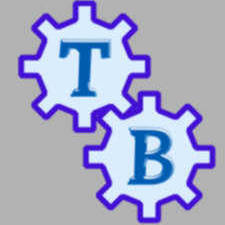-
Posts
858 -
Joined
Reputation Activity
-
 Skanky Sylveon got a reaction from TechyBen in A single board computer with a Ryzen Embedded starts shipping this week
Skanky Sylveon got a reaction from TechyBen in A single board computer with a Ryzen Embedded starts shipping this week
Lowest configuration will be 229 dollars. The upgraded CPU will probably tack a decent amount on to the cost though.
The lattepanda alpha is a popular Plex server option, the odroid h2 can be used as one as well, but it can't stream to as many devices simultaneously.
The h2 also has 2 gigabit ethernet ports.
As far as 10 gigabit, the cheapest available 10gb cards are about 100 dollars. That extra cost would be prohibitive for the intended price bracket, especially since most people won't take advantage of it.
You may be able to add a 10gb card through an m.2 adapter. Such as this one.
It was originally meant for miners, but people have used it to expand their PCIe devices.
I'm pretty sure it comes with a heatsink, that would be nice if it was standard PC heatsink spacing, but I don't think so.
-
 Skanky Sylveon got a reaction from ARikozuM in A single board computer with a Ryzen Embedded starts shipping this week
Skanky Sylveon got a reaction from ARikozuM in A single board computer with a Ryzen Embedded starts shipping this week
Single board computers come in all shapes and sizes, from the Raspberry pi, to the odroid h2. While there are several differences between all of them, they usually have all of the nessacary components, or at least the essential components to operate all in a single PCB, thus the term "single board computer".
A new addition to the rather large (and loosely defined) family is the UDOO BOLT, which is a single board computer that will have an embedded Ryzen CPU.
https://www.google.com/amp/s/liliputing.com/2019/03/udoo-bolt-single-board-pc-with-ryzen-embedded-starts-shipping-this-week-crowdfunding.html/amp
So don't expect the same level of performance as the desktop CPUs, but this may be one of the most powerful single board computers on the market.
First off, let's talk about the form factor. While I could talk about how small that is, I think that showing would be better.
4.7 inches equates to roughly 120mm.
So if you have a 120mm fan lying around, you can roughly judge the size, which needless to say, is quite tiny.
Now let's talk about the CPU options.
Both of those are low power, both of them having a 15w TDP.
The V1605B is the same exact CPU that the upcoming Smach Z is using, which seems to play most modern titles at around 720p at 30-60FPS, which for such a low powered CPU, is rather impressive.
While this won't be a proper desktop replacement for gamers, it could serve that purpose for general use, the Arduino compatible pins are what's going to interest tinkerers though.
32 GB of EMMC is too small for a Windows installation, but it should work with most linux distros. There are SATA ports for HDDs/SSDs though, as well as an m.2 PCIe slot, while you would traditionally think to put an SSD there, you are able to hook up an external GPU to the lattepanda alpha (another powerful single board computer) with an adapter, and I wonder if the same thing could be done here. Strapping on an external GPU and PSU (since the GPU needs to be powered) kinda defeats the purpose of the small form factor though.
And now the elephant in the room. This is a kickstarted product, that's not nessacarlly bad, but kickstarted projects tend to have a rather bad reputation of not delivering, this product was already supposed to be shipped out last year, and it's almost April.
However in the grand scheme of things, 1/4th of a year isn't the end of the world, and it seems like the early bird backers will get the first batch.
So not available to the general public yet, but that will hopefully change in the coming months.
And now for an opinion piece from me. I have recently gotten into single board computers, and this interests me for several reasons.
First off, I don't think that I have ever seen a Ryzen single board computer, and second, this is a lot of power in a small form factor. The most powerful single board computer currently is the lattepanda alpha, which I already mentioned briefly, but that board has some limitations, soldered in RAM, no SATA ports, etc. It's a great board, but it's limited in expansion, while that makes it very thin (as well as smaller then the UDOO BOLT footprint wise) it limits what you can do with it.
Furthermore, the GPIO on the lattepanda alpha can only be controlled by the on board ATMega32u4 microcontroller, which connects to the CPU via serial interface, further limiting what you can do with the board.
So my hope with the UDOO BOLT is if it gives similar, if not greater CPU performance without the shortcomings of the lattepanda alpha.
-
 Skanky Sylveon got a reaction from Technous285 in A single board computer with a Ryzen Embedded starts shipping this week
Skanky Sylveon got a reaction from Technous285 in A single board computer with a Ryzen Embedded starts shipping this week
Single board computers come in all shapes and sizes, from the Raspberry pi, to the odroid h2. While there are several differences between all of them, they usually have all of the nessacary components, or at least the essential components to operate all in a single PCB, thus the term "single board computer".
A new addition to the rather large (and loosely defined) family is the UDOO BOLT, which is a single board computer that will have an embedded Ryzen CPU.
https://www.google.com/amp/s/liliputing.com/2019/03/udoo-bolt-single-board-pc-with-ryzen-embedded-starts-shipping-this-week-crowdfunding.html/amp
So don't expect the same level of performance as the desktop CPUs, but this may be one of the most powerful single board computers on the market.
First off, let's talk about the form factor. While I could talk about how small that is, I think that showing would be better.
4.7 inches equates to roughly 120mm.
So if you have a 120mm fan lying around, you can roughly judge the size, which needless to say, is quite tiny.
Now let's talk about the CPU options.
Both of those are low power, both of them having a 15w TDP.
The V1605B is the same exact CPU that the upcoming Smach Z is using, which seems to play most modern titles at around 720p at 30-60FPS, which for such a low powered CPU, is rather impressive.
While this won't be a proper desktop replacement for gamers, it could serve that purpose for general use, the Arduino compatible pins are what's going to interest tinkerers though.
32 GB of EMMC is too small for a Windows installation, but it should work with most linux distros. There are SATA ports for HDDs/SSDs though, as well as an m.2 PCIe slot, while you would traditionally think to put an SSD there, you are able to hook up an external GPU to the lattepanda alpha (another powerful single board computer) with an adapter, and I wonder if the same thing could be done here. Strapping on an external GPU and PSU (since the GPU needs to be powered) kinda defeats the purpose of the small form factor though.
And now the elephant in the room. This is a kickstarted product, that's not nessacarlly bad, but kickstarted projects tend to have a rather bad reputation of not delivering, this product was already supposed to be shipped out last year, and it's almost April.
However in the grand scheme of things, 1/4th of a year isn't the end of the world, and it seems like the early bird backers will get the first batch.
So not available to the general public yet, but that will hopefully change in the coming months.
And now for an opinion piece from me. I have recently gotten into single board computers, and this interests me for several reasons.
First off, I don't think that I have ever seen a Ryzen single board computer, and second, this is a lot of power in a small form factor. The most powerful single board computer currently is the lattepanda alpha, which I already mentioned briefly, but that board has some limitations, soldered in RAM, no SATA ports, etc. It's a great board, but it's limited in expansion, while that makes it very thin (as well as smaller then the UDOO BOLT footprint wise) it limits what you can do with it.
Furthermore, the GPIO on the lattepanda alpha can only be controlled by the on board ATMega32u4 microcontroller, which connects to the CPU via serial interface, further limiting what you can do with the board.
So my hope with the UDOO BOLT is if it gives similar, if not greater CPU performance without the shortcomings of the lattepanda alpha.
-
 Skanky Sylveon got a reaction from WereCat in A single board computer with a Ryzen Embedded starts shipping this week
Skanky Sylveon got a reaction from WereCat in A single board computer with a Ryzen Embedded starts shipping this week
Single board computers come in all shapes and sizes, from the Raspberry pi, to the odroid h2. While there are several differences between all of them, they usually have all of the nessacary components, or at least the essential components to operate all in a single PCB, thus the term "single board computer".
A new addition to the rather large (and loosely defined) family is the UDOO BOLT, which is a single board computer that will have an embedded Ryzen CPU.
https://www.google.com/amp/s/liliputing.com/2019/03/udoo-bolt-single-board-pc-with-ryzen-embedded-starts-shipping-this-week-crowdfunding.html/amp
So don't expect the same level of performance as the desktop CPUs, but this may be one of the most powerful single board computers on the market.
First off, let's talk about the form factor. While I could talk about how small that is, I think that showing would be better.
4.7 inches equates to roughly 120mm.
So if you have a 120mm fan lying around, you can roughly judge the size, which needless to say, is quite tiny.
Now let's talk about the CPU options.
Both of those are low power, both of them having a 15w TDP.
The V1605B is the same exact CPU that the upcoming Smach Z is using, which seems to play most modern titles at around 720p at 30-60FPS, which for such a low powered CPU, is rather impressive.
While this won't be a proper desktop replacement for gamers, it could serve that purpose for general use, the Arduino compatible pins are what's going to interest tinkerers though.
32 GB of EMMC is too small for a Windows installation, but it should work with most linux distros. There are SATA ports for HDDs/SSDs though, as well as an m.2 PCIe slot, while you would traditionally think to put an SSD there, you are able to hook up an external GPU to the lattepanda alpha (another powerful single board computer) with an adapter, and I wonder if the same thing could be done here. Strapping on an external GPU and PSU (since the GPU needs to be powered) kinda defeats the purpose of the small form factor though.
And now the elephant in the room. This is a kickstarted product, that's not nessacarlly bad, but kickstarted projects tend to have a rather bad reputation of not delivering, this product was already supposed to be shipped out last year, and it's almost April.
However in the grand scheme of things, 1/4th of a year isn't the end of the world, and it seems like the early bird backers will get the first batch.
So not available to the general public yet, but that will hopefully change in the coming months.
And now for an opinion piece from me. I have recently gotten into single board computers, and this interests me for several reasons.
First off, I don't think that I have ever seen a Ryzen single board computer, and second, this is a lot of power in a small form factor. The most powerful single board computer currently is the lattepanda alpha, which I already mentioned briefly, but that board has some limitations, soldered in RAM, no SATA ports, etc. It's a great board, but it's limited in expansion, while that makes it very thin (as well as smaller then the UDOO BOLT footprint wise) it limits what you can do with it.
Furthermore, the GPIO on the lattepanda alpha can only be controlled by the on board ATMega32u4 microcontroller, which connects to the CPU via serial interface, further limiting what you can do with the board.
So my hope with the UDOO BOLT is if it gives similar, if not greater CPU performance without the shortcomings of the lattepanda alpha.
-
 Skanky Sylveon got a reaction from CharminUltraStrong in Favourite Jelly/Preserve?
Skanky Sylveon got a reaction from CharminUltraStrong in Favourite Jelly/Preserve?
You are objectively wrong.
-
 Skanky Sylveon got a reaction from TopHatProductions115 in Favourite Jelly/Preserve?
Skanky Sylveon got a reaction from TopHatProductions115 in Favourite Jelly/Preserve?
I was a bee keeper, some tweakers kept on opening up the hives and was fucking with them.
Have yet to start up a hive here.
-
.png) Skanky Sylveon got a reaction from TopHatProductions115 in Favourite Jelly/Preserve?
Skanky Sylveon got a reaction from TopHatProductions115 in Favourite Jelly/Preserve?
You are objectively wrong.
-
 Skanky Sylveon got a reaction from Razor Blade in POLL Do cuddlefish like to cuddle?
Skanky Sylveon got a reaction from Razor Blade in POLL Do cuddlefish like to cuddle?
Also, @Razor Blade
-
.png)
-
.png)
-
.png) Skanky Sylveon got a reaction from TopHatProductions115 in POLL Do cuddlefish like to cuddle?
Skanky Sylveon got a reaction from TopHatProductions115 in POLL Do cuddlefish like to cuddle?
I got bored.
-
 Skanky Sylveon reacted to ARikozuM in POLL Do cuddlefish like to cuddle?
Skanky Sylveon reacted to ARikozuM in POLL Do cuddlefish like to cuddle?
Yes. As long as it has your consent.*
*Consent not required in Japan.
-
 Skanky Sylveon got a reaction from PeterT in Vectordash is looking for individuals willing to rent out excess GPU horsepower (possibly from previous miners) for a cloud rendering service
Skanky Sylveon got a reaction from PeterT in Vectordash is looking for individuals willing to rent out excess GPU horsepower (possibly from previous miners) for a cloud rendering service
https://bitcoinist.com/gpu-miners-may-soon-have-another-way-to-make-money/
I decided to bold and color a rather relevant sentence in my opinion. Many US citizens don't have the required internet speeds in order to take advantage of such a service, and even then, internet speeds are a rather inconsistent beast, especially if you have faimly that may be watching videos or playing games themselves at the same time.
But rather obvious concerns aside, let's talk about the main headline of the article, that cryptocurrency miners may have another revenue source. I think that the biggest concerns with such a statement is that whether or not GPUs will become scarce again, while people are grabbing them up to make a quick profit. I doubt it, while existing miners may take advantage of this offer (those who didn't just immediately sell their stock due to most miners being concerned about short term profits only) I don't see people pulling the trigger on this as much due to.
1: This being more of a business partnership thus a lack of control on what the owners of said GPUs can do.
2: The lack of evidence that there is a strong market for GPU rendering services.
3: The fact that customers are involved, once you start serving others, it becomes an entirely different matter. A bunch of clients get frustrated because you have poor ping because you are using satellite internet? Vectordash will probably cut you off.
4: This is somewhat of a branch of number 3, but the GPU owners must have very good internet, at least the ones who have several hundred GPUs from mining.
Let's take me for example.
Ping is rather good, download speeds are good, upload speeds are ok, a bit lacking, but my property is business/residential, meaning I can get business service for around 150 a month (which would match my upload speeds with my download speeds), more then twice what I'm paying for currently, but let's see how much Vectordash is paying those who rent out their GPUs.
That equates to 18 dollars and 60 cents a month, if said month is 31 days. I am assuming that goes by per GPU, if that's the csse, I would need 9 GPUs to just about break even 167 dollars and 40 cents, and even then I would need to equate the power consumption that I would need to pay. Furthermore, these services tend to be full blown systems, so you would probably need a beefy enough CPU to virtualize that many desktops, which most miners probably dont have. Mining isn't exactly CPU intensive, and that's assuming that they have the luxury of decent internet, it's quite possible that they do not.
So rant aside, I find the title rather silly, so I changed it. To be fair, Vectordash is thinking outside of the box, and the possibility of renting out old hardware would be a nice way to make a few bucks, but I don't see this gaining too much traction. I don't find these computer streaming rental services catching on in general actually, but maybe I'm wrong.
-
 Skanky Sylveon got a reaction from EarthWormJM2 in Crytek reveals real time raytracing that works with both Nvidia and AMD hardware.
Skanky Sylveon got a reaction from EarthWormJM2 in Crytek reveals real time raytracing that works with both Nvidia and AMD hardware.
Let's do some tests, shall we?
The gif that I'm going to link should be self explanatory.
Blender uses pathtracing, which is more complex then raytracing, but is the same basic thing.
The render uses 500 samples, is the same resolution with each render, the only difference is the number of light bounces.
The render that has the higher number of light bounces clearly has more highlights and just "pops" more. Now let's check some of the rtrt examples in the form of glorious screenshots.
It seems that the rtrt reflections are the same, they "pop" less then the original. The reflections do look a bit "smeared" or had some ghosting like @Mira Yurizaki stated, not entirely sure why it's there, but my guess is that the raytraced reflections are using a rather low sample rate, and there is some kind of blurring used to mask the pixelated look that a low sample rate would provide.
-
 Skanky Sylveon got a reaction from EarthWormJM2 in Crytek reveals real time raytracing that works with both Nvidia and AMD hardware.
Skanky Sylveon got a reaction from EarthWormJM2 in Crytek reveals real time raytracing that works with both Nvidia and AMD hardware.
https://www.techspot.com/amp/news/79221-much-rtx-crytek-reveals-real-time-ray-tracing.html
I was informed thag posting a YouTube video is appropriate in this instance, so below you will see a video demo that was using a Vega 56 to render a partally raytraced scene, not unlike Nvidia's own real time raytracing.
That's definitely interesting. Perhaps this will be the gateway for rtrt with AMD users. I have my doubts though, this so far is just a demo, which isn't necessarily indicative of real time performance, second off, as the article itself says.
We are still not sure whether this particular form of rtrt will benefit from Nvidia's specialized rtrt hardware, even though, it seems to run well on AMD cards if the demo has anything to say about it.
However, this is Crytek, the same company that developed/created Crysis, which was revolutionary and pushed what hardware could do at the time to it's limits, so it wouldn't surprise me if they manage to make rtrt possible for non RTX users.
-
 Skanky Sylveon got a reaction from LAwLz in Vectordash is looking for individuals willing to rent out excess GPU horsepower (possibly from previous miners) for a cloud rendering service
Skanky Sylveon got a reaction from LAwLz in Vectordash is looking for individuals willing to rent out excess GPU horsepower (possibly from previous miners) for a cloud rendering service
Hello Abhishek. I'm glad that you decided to make an account to clarify a few things.
First off, welcome to the fourms! And second, some of your answers raised a few questions that I would like you to awnser for me if you can.
Will the hardware owners in question know if there is an active stream or not? I could see that definitely being a potential problem if someone turns off a machine unknowingly while a stream is happening.
So your company's plan is to rent hardware throughout the United states, instead of having all of the hardware in a centralized location, then connect said hardware to clients within a relatively close proximity?
That would definitely help with overall ping. The closer the connection is, the better. For the most part.
That's definitely better, a minimum of 2 dollars a month is much more reasonable. How is the pay calculated? Is it by hardware? Client use? Or some other factor? Is an entire system needed, so CPU, motherboard, RAM, etc?
I'm asking that last question because the bitcoinist stated that miners could use their old GPUs that was used for mining as a part of your GPU rendering service. The only issue with that is most mining setups are quite different from most gaming rigs. Mining setups tend to have many GPUs hooked up to a single motherboard via PCIe x1 or even USB connections, all running off a low power, relatively low performance CPU. Meaning that a mining setup wouldn't necessarily make a good gaming setup.
Thanks again, and I look forward to hearing your reply.
-
 Skanky Sylveon reacted to abharga2 in Vectordash is looking for individuals willing to rent out excess GPU horsepower (possibly from previous miners) for a cloud rendering service
Skanky Sylveon reacted to abharga2 in Vectordash is looking for individuals willing to rent out excess GPU horsepower (possibly from previous miners) for a cloud rendering service
Hey guys! I'm Abhishek, one of the cofounders of Vectordash and I wanted to respond to this just to clarify a couple things.
First, the owners of the GPUs have full flexibility over what they do with the GPUs. People can also take their machines offline whenever they want, as long as there isn't an active stream.
I would argue that there is a massive market for GPU rendering services, especially a distributed model where we can deliver much lower latency than similar providers. This makes it easy for gamers to circumvent the large upfront cost of building a gaming PC, and instead pay a small fee for a monthly subscription.
We do "quality of life" checks for the client to make sure the client has reasonable download speeds and pings, and we also measure pings before the stream starts, so if the client connects to your machine, they will most likely have a good experience.
Finally, the payout quoted in the bitcoinist article is actually incorrect. We're planning to pay out between $60-$105 / GPU / month depending on utilization.
Hope this is helpful, and would love any feedback! Cheers :)
-
 Skanky Sylveon got a reaction from PeterT in Crytek reveals real time raytracing that works with both Nvidia and AMD hardware.
Skanky Sylveon got a reaction from PeterT in Crytek reveals real time raytracing that works with both Nvidia and AMD hardware.
Let's do some tests, shall we?
The gif that I'm going to link should be self explanatory.
Blender uses pathtracing, which is more complex then raytracing, but is the same basic thing.
The render uses 500 samples, is the same resolution with each render, the only difference is the number of light bounces.
The render that has the higher number of light bounces clearly has more highlights and just "pops" more. Now let's check some of the rtrt examples in the form of glorious screenshots.
It seems that the rtrt reflections are the same, they "pop" less then the original. The reflections do look a bit "smeared" or had some ghosting like @Mira Yurizaki stated, not entirely sure why it's there, but my guess is that the raytraced reflections are using a rather low sample rate, and there is some kind of blurring used to mask the pixelated look that a low sample rate would provide.
-
 Skanky Sylveon got a reaction from Sauron in Vectordash is looking for individuals willing to rent out excess GPU horsepower (possibly from previous miners) for a cloud rendering service
Skanky Sylveon got a reaction from Sauron in Vectordash is looking for individuals willing to rent out excess GPU horsepower (possibly from previous miners) for a cloud rendering service
https://bitcoinist.com/gpu-miners-may-soon-have-another-way-to-make-money/
I decided to bold and color a rather relevant sentence in my opinion. Many US citizens don't have the required internet speeds in order to take advantage of such a service, and even then, internet speeds are a rather inconsistent beast, especially if you have faimly that may be watching videos or playing games themselves at the same time.
But rather obvious concerns aside, let's talk about the main headline of the article, that cryptocurrency miners may have another revenue source. I think that the biggest concerns with such a statement is that whether or not GPUs will become scarce again, while people are grabbing them up to make a quick profit. I doubt it, while existing miners may take advantage of this offer (those who didn't just immediately sell their stock due to most miners being concerned about short term profits only) I don't see people pulling the trigger on this as much due to.
1: This being more of a business partnership thus a lack of control on what the owners of said GPUs can do.
2: The lack of evidence that there is a strong market for GPU rendering services.
3: The fact that customers are involved, once you start serving others, it becomes an entirely different matter. A bunch of clients get frustrated because you have poor ping because you are using satellite internet? Vectordash will probably cut you off.
4: This is somewhat of a branch of number 3, but the GPU owners must have very good internet, at least the ones who have several hundred GPUs from mining.
Let's take me for example.
Ping is rather good, download speeds are good, upload speeds are ok, a bit lacking, but my property is business/residential, meaning I can get business service for around 150 a month (which would match my upload speeds with my download speeds), more then twice what I'm paying for currently, but let's see how much Vectordash is paying those who rent out their GPUs.
That equates to 18 dollars and 60 cents a month, if said month is 31 days. I am assuming that goes by per GPU, if that's the csse, I would need 9 GPUs to just about break even 167 dollars and 40 cents, and even then I would need to equate the power consumption that I would need to pay. Furthermore, these services tend to be full blown systems, so you would probably need a beefy enough CPU to virtualize that many desktops, which most miners probably dont have. Mining isn't exactly CPU intensive, and that's assuming that they have the luxury of decent internet, it's quite possible that they do not.
So rant aside, I find the title rather silly, so I changed it. To be fair, Vectordash is thinking outside of the box, and the possibility of renting out old hardware would be a nice way to make a few bucks, but I don't see this gaining too much traction. I don't find these computer streaming rental services catching on in general actually, but maybe I'm wrong.
-
 Skanky Sylveon reacted to Stefan Payne in Crytek reveals real time raytracing that works with both Nvidia and AMD hardware.
Skanky Sylveon reacted to Stefan Payne in Crytek reveals real time raytracing that works with both Nvidia and AMD hardware.
Why?!
How can you think that?!
IIRC AMD talked about Raytracing in the past - well, who didn't.
And its already in use in one form or another in games.
Just the usual suspects thought to pound the marketing drum a bit more for whatever reason.
And with Async Compute, there is no reason to assume that AMD is not able to implement it, especially since they already talked about it and that in theory all more modern cards can be enabled for Raytracing (My guess would be Polaris and VEGA, but also Tahiti is posible as well, though with higher performance impact).
yeah, like using tesselation for hair for example.
That's total horse shit and makes NO SENSE as it isn't very efficient and wastes performance for nothing.
The better Implementation, wich is also free, we've seen in Tomb Raider 2013...
But hey, we pound the Marketing drum, so it has to be better, right?!
The If makes no sense as it is already in use. Look for the Presentation of Killzone Shadow Fall.
Also it makes no sense to implement something that like 0,000002% of the Market can use, especially when the Manufacturer of that technology fragments the Market with the new generation and doesn't allow it with the lower end cards.
In other words: RTX is already dead because the lower end cards don't come with it.
It never worked ever in the past.
Yeah and also stop using proprietary garbage that nobody knows what it does.
But it seems that they tank the Performance "magically" on some cards...
-
 Skanky Sylveon reacted to Mira Yurizaki in Crytek reveals real time raytracing that works with both Nvidia and AMD hardware.
Skanky Sylveon reacted to Mira Yurizaki in Crytek reveals real time raytracing that works with both Nvidia and AMD hardware.
Because at some point if you're going to spend as much effort to cheat on the effect as it does to do the effect itself, you may as well do the effect.
Also note that this is only showing off reflections. NVIDIA's ray tracing also touches on shadowing, global illumination, ambient occlusion, and transparency/translucency. NVIDIA likely wants to make it so RT handles those instead of traditional shaders. Unless CryTek's RTRT can do all of those as well at the same time, it's only scratching the surface.
-
 Skanky Sylveon reacted to colonel_mortis in Crytek reveals real time raytracing that works with both Nvidia and AMD hardware.
Skanky Sylveon reacted to colonel_mortis in Crytek reveals real time raytracing that works with both Nvidia and AMD hardware.
You're welcome to post the video - it's just posting your own videos that isn't allowed, and even then it's not as strict as "never except in status updates".
-
 Skanky Sylveon got a reaction from Beskamir in Crytek reveals real time raytracing that works with both Nvidia and AMD hardware.
Skanky Sylveon got a reaction from Beskamir in Crytek reveals real time raytracing that works with both Nvidia and AMD hardware.
Let's do some tests, shall we?
The gif that I'm going to link should be self explanatory.
Blender uses pathtracing, which is more complex then raytracing, but is the same basic thing.
The render uses 500 samples, is the same resolution with each render, the only difference is the number of light bounces.
The render that has the higher number of light bounces clearly has more highlights and just "pops" more. Now let's check some of the rtrt examples in the form of glorious screenshots.
It seems that the rtrt reflections are the same, they "pop" less then the original. The reflections do look a bit "smeared" or had some ghosting like @Mira Yurizaki stated, not entirely sure why it's there, but my guess is that the raytraced reflections are using a rather low sample rate, and there is some kind of blurring used to mask the pixelated look that a low sample rate would provide.
-
 Skanky Sylveon reacted to Mira Yurizaki in Crytek reveals real time raytracing that works with both Nvidia and AMD hardware.
Skanky Sylveon reacted to Mira Yurizaki in Crytek reveals real time raytracing that works with both Nvidia and AMD hardware.
I'm wondering if this is an evolution of previous single bounce reflections (since they've been a thing for a while) and there's a basic ray tracing component in it. Since there is some ray-tracing component in it, marketing is free to use the term "ray tracing." After all, Guerilla said their reflection system for Killzone: Shadow Fall uses "ray tracing" (https://www.eurogamer.net/articles/digitalfoundry-the-making-of-killzone-shadow-fall
https://www.guerrilla-games.com/read/killzone-shadow-fall-demo-postmortem (slide 84) )
But anyway, the proof is in the pudding that CryTek did something impressive. However I want to know how that pudding was made.
-
.png) Skanky Sylveon got a reaction from chen57 in Favourite Jelly/Preserve?
Skanky Sylveon got a reaction from chen57 in Favourite Jelly/Preserve?
It depends on what it's on. Mint jelly is common on lamb for example.
I don't like grape that much though.
And now to disgust everyone.
America, this is why people laugh at you, and this is coming from an American!


.thumb.jpg.c24e50caf0f454236db021676ad49609.jpg)

.thumb.jpg.94f4ebc6714f0921314e56fdba4a05bf.jpg)









